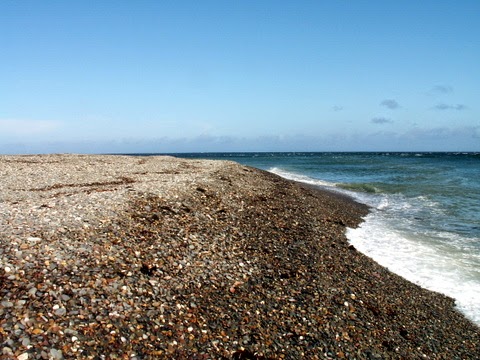The Manx Electric Railway is an electric inter-urban tramway connecting Douglas with Laxey and Ramsey in the north. The tram terminus is at Derby Castle at the northern end of Douglas promenade.
The line is undulating and passes through some areas of great scenic beauty.
The line first passes through ONCHAN which is a large village at the northern end of Douglas Bay forming a conurbation with Douglas. With some 9,000 inhabitants, this pretty commuter village has the second largest population on the island after Douglas.
There has been a church at Onchan since the 12th century, but the present church of St Peter was consecrated in 1833.
The well known Manx Arts
& Crafts designer Archibald Knox, was born in the Isle of Man in 1864 and
is well known for his Celtic Arts designs for Liberty. As a favour he designed
a couple of gravestones which can be seen in the churchyard of St Peter’s at
. On the Thomason stone, the ‘o’ in Marion is a significant
trademark.
Despite her large family tomb
being in the churchyard of St Peter’s
church, Caroline Elizabeth, youngest daughter of
Major Joseph Bury Clew, was buried outside the tomb. A small grave stone
situated close to the tomb tells us that she died in 1866 aged 40 years. A
curious thing is that whilst other gravestones in this churchyard face
north/south, Caroline’s stone faces east. It is not known how this situation
came to be.
The views along the east coast are spectacular.
LAXEY is a large coastal village on the main A2 road between Douglas and Ramsey where the houses slope down to the little harbour which was built in the 1850's to service the mining industry.
The village is now given over to tourism.
The harbour is now used by inshore fishing vessels and leisure boats.
In the 19th century Laxey was a lead and zinc mining village and at one time the mines were the deepest in the world. They employed some 600 men
at their peak.
The Laxey Wheel at the foothills of Scafell Pike, is one of the most iconic structures on the island. It was built in 1854 to pump water from the mine shafts and it is still the largest working waterwheel in the world. The huge wheel is 72ft 6in in diameter and now fully restored, it is in the care of Manx National Heritage, and a huge tourist attraction.
Christ Church was constructed by the Mining Company and consecrated in 1856.
At Laxey Station the Electric Railway connects with the
Snaefell Mountain Railway.
Snaefell Mountain Railway is about five miles long and is the only electric mountain railway in the British Isles. It has been in operation since 1895 and travels between Laxey and the mountain summit at 2,036 feet above sea level.
The only stop is at The Bungalow, a notable landmark on the TT Course.
It is said that on a clear day you can see some, or all, of the Seven Kingdoms - England. Ireland, Scotland, Wales, the Isle of Man and the kingdoms of heaven and the sea.
Further up the east coast, RAMSEY is the second largest town on the island with a population of some 7,300. It is a seaside resort with a large harbour. The northern terminus of the Manx Electric Railway, the town is also a focal point for the TT Races.
St Paul's Church dominates the Market Place.
The northern part of the island is a flat plain consisting of glacial tills and marine sediments. The extreme tip, known as the POINT OF AYRE, is a just 16 miles south of Burrow Head in Scotland.








.JPG)
.JPG)
.JPG)








.JPG)
.JPG)




.JPG)

.JPG)
.JPG)
.JPG)
.JPG)
.JPG)
.JPG)








No comments:
Post a Comment